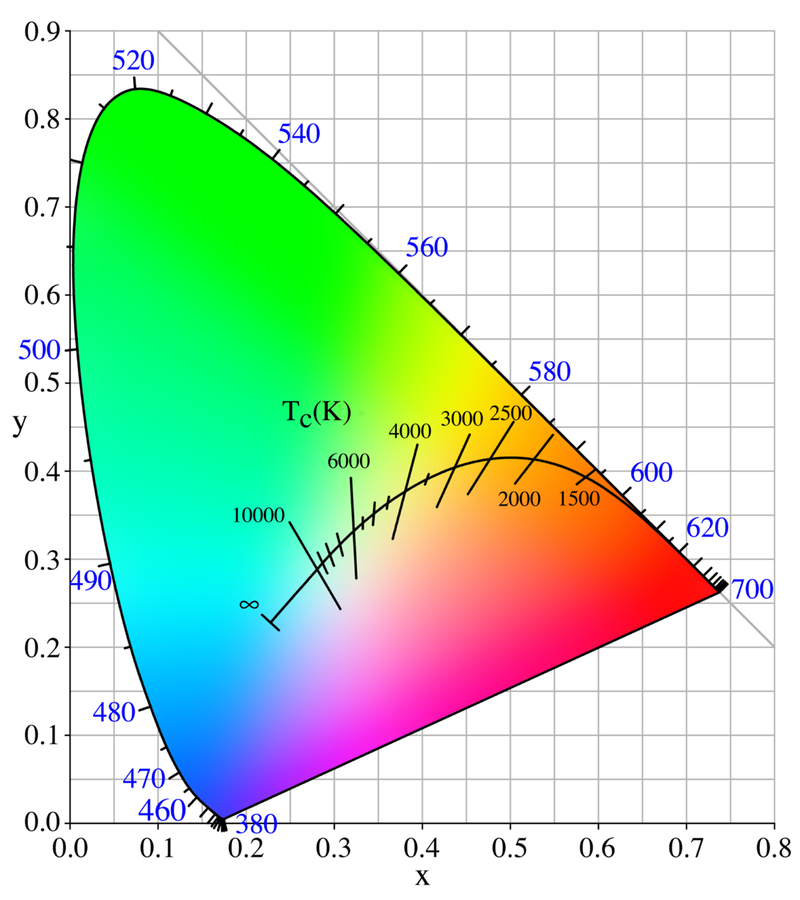The color temperature of a light source is the temperature of an ideal black-body radiator that radiates light of comparable hue
to that of the light source. Color temperature is a characteristic of visible light that has important applications in lighting,
photography, videography, publishing, manufacturing, astrophysics, horticulture, and other fields. In practice, color
temperature is only meaningful for light sources that do in fact correspond somewhat closely to the radiation of
some black body, i.e., those on a line from reddish/orange via yellow and more or less white to blueish white; it does
not make sense to speak of the color temperature of, e.g., a green or a purple light. Color temperature is conventionally
expressed in Kelvin, using the symbol K, a unit of measure for temperature based on the Kelvin scale.
Color temperatures over 5,000K are called cool colors (bluish white), while lower color temperatures (2,700–3,000 K)
are called warm colors (yellowish white through red). This relation, however, is a psychological one in contrast to the
physical relation implied by Wien's displacement law, according to which the spectral peak is shifted towards shorter
wavelengths (resulting in a more blueish white) for higher temperatures.
For lighting building interiors, it is often important to take into account the color temperature of illumination.
For example, a warmer (i.e., lower color temperature) light is often used in public areas to promote relaxation, while
a cooler (higher color temperature) light is used to enhance concentration in offices.
CCT dimming for LED technology is regarded as a difficult task, since binning, age and temperature drift effects of LEDs
change the actual color value output. Here feedback loop systems are used for example with color sensors, to
actively monitor and control the color output of multiple color mixing LEDs.

